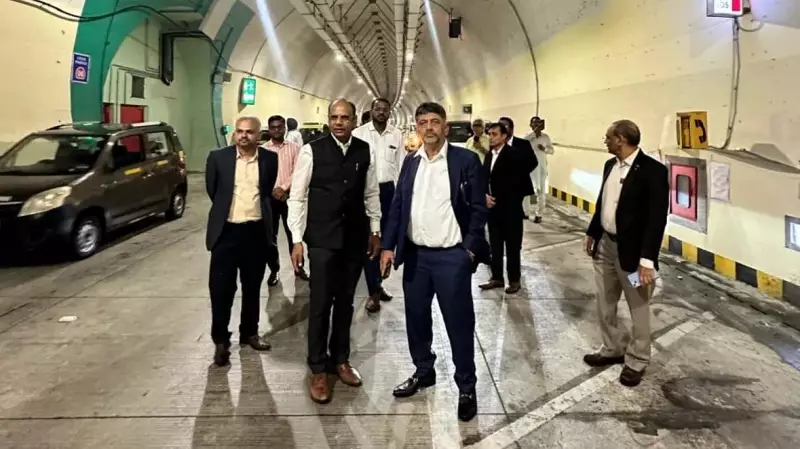
In a tale of two infrastructure projects racing along identical paths, Bengaluru is witnessing a dramatic contrast in execution speeds that has citizens and urban planners alike taking notice. While the metro expansion crawls forward, the proposed tunnel road project is charging ahead with surprising momentum.
The Parallel Path Puzzle
The proposed 15.5-kilometer tunnel road and the metro's Phase 3 extension share an almost identical alignment from KR Circle to Hebbal, creating an unprecedented urban development scenario. This parallel planning has inadvertently turned into a real-time case study of how different government agencies approach massive infrastructure challenges.
Lightning vs Snail: The Speed Divide
The numbers tell a compelling story. The Bruhat Bengaluru Mahanagara Palike (BBMP), responsible for the tunnel road, has completed its detailed project report in just three months flat. Meanwhile, the Bangalore Metro Rail Corporation Limited (BMRCL) anticipates requiring a full year merely to prepare its detailed project report for the same stretch.
"This isn't just about different agencies—it's about fundamentally different approaches to problem-solving," notes an urban infrastructure expert who preferred anonymity. "The tunnel road team operated with startup-like agility, while the metro follows established bureaucratic protocols."
What's Driving the Disparity?
Several factors contribute to this dramatic speed difference:
- Procedural Flexibility: The tunnel road project benefits from simpler approval processes and fewer regulatory hurdles
- Technical Complexity: Metro projects inherently involve more sophisticated planning and safety considerations
- Land Acquisition: Underground tunnel construction faces fewer land acquisition challenges compared to elevated metro corridors
- Proven Technology: Tunnel construction methods are well-established, reducing planning uncertainty
The Citizen's Perspective
For Bengaluru's commuters, who regularly endure some of India's worst traffic congestion, the speed disparity raises both hope and concern. While the faster-moving tunnel road promises quicker relief, questions about long-term urban planning coherence linger.
"We need both solutions, but we also need coordination," says Priya Sharma, a Whitefield resident who commutes daily to the city center. "It feels like two doctors prescribing different medicines without consulting each other."
The Bigger Picture: Urban Planning at Crossroads
This infrastructure race highlights a critical challenge facing India's tech capital: how to balance speed with sustainability, immediate relief with long-term vision. The tunnel road versus metro dynamic represents a microcosm of the larger tensions in urban development—between quick fixes and permanent solutions, between road-based and rail-based transit futures.
As Bengaluru watches these parallel projects unfold, the outcomes may well set precedents for how Indian cities approach their infrastructure crises in the coming decades.





